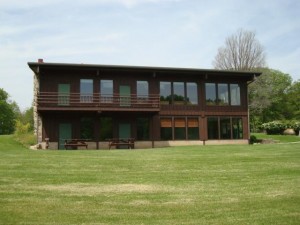Did You Know: The Story of the Heifer Project
As told by W. E. Ickes, father of Ruth Brewer of the Dallas Center COB
The United Nations Relief and Rehabilitation Administration was set up in 1943 by forty-four nations to relieve suffering caused by World War II. The organization began to operate on a large scale in 1944. UNRRA did it greatest work in the two years after WW II. Food was distributed to save millions of persons from starvation.
The Heifer Project International which was organized by Dan West of the Church of the Brethren had already been started and had shipped a few cattle with the UNRRA program. These went to Greece. UNRRA was officially ended on June 30, 1947.
Ex Mayor La Guardia of New York was the head of the program. I was able to hear LaGuardia speak at a meeting of the U.N. He was very much interested in Heifer Project and said there was great need for more help in Europe. He turned over what money was left from his program to H.P. to help pay for shipments which cost $165 per head by boat. This was about the average price of a heifer here. The H.P. committee had asked the U.S. Government to help pay for the transportation and it took some six months to decide if this was material aid or not. They finally took it over and after the U. S. Government quit we had to ask the country who received the cattle to pay the transportation.
I was the representative for Iowa and adjoining states from 1945 to 1960. The cattle were brought to our farm and when we had enough for a truckload, we had the cattle tested and then sent to New Windsor, Md. Later we trucked them to a farm close to N.Y. in Pennsylvania. I shipped one car load by rail from Iowa City to New Windsor. Because the Amish people didn’t have quite a full load I took some from here.
We received cattle from Iowa, Missouri, Kansas, Arkansas, Minnesota and South Dakota. Heifer Project during that period shipped around thirteen thousand head with three thousand coming from the Midwest.
I accompanied 3 shipments to Europe. The first trip I took 165 head and we had 16 calves born on the 18th day of the voyage to Naples, Italy. The next two trips were to Germany in 1950 and 1953.
There still is an organization known the Heifer Project International and they have purchased a ranch near Little Rock, Arkansas, which contains 1200 acres. There is also an agency at Goshen, IN, for the Northern States. There was a shipment by air in 1975 of fifty head of Holstein heifers from Harrisburg, PA, for Amman, Jordan. This shipment was sponsored by the Mennonite Central Committee. The Goshen H.P.I. was responsible for putting it together.
I am thankful I am a member of the Church of the Brethren because they have proven the need to help others at home as well as abroad. I spent a lot of hours in H.P. work and nothing I did gave me greater satisfaction. I tried to show my appreciation by sharing my vision I had of Europe in schools, churches, and organizations of all kinds with colored slides and a message. This was always very much appreciated.
I wonder why government officials never seems to get a vision after they return from seeing Europe that there is a need here at home for cleaning up and for keeping up our railroads and rivers. We have plenty of work here to do but people seem to take relief instead.
How would we act if we really loved our neighbors as ourselves? Without faith, we have no driving force. Love is the greatest undergirding of our peace program.

